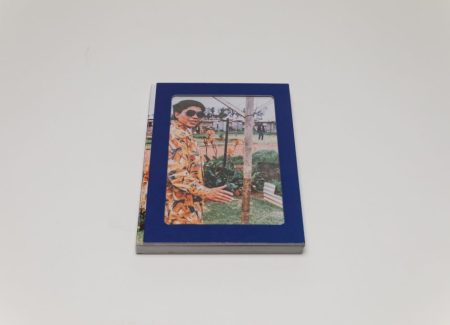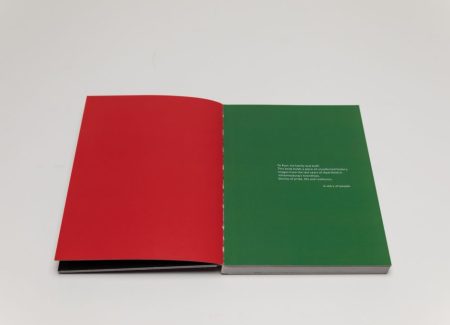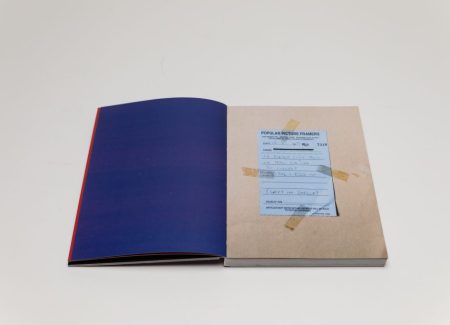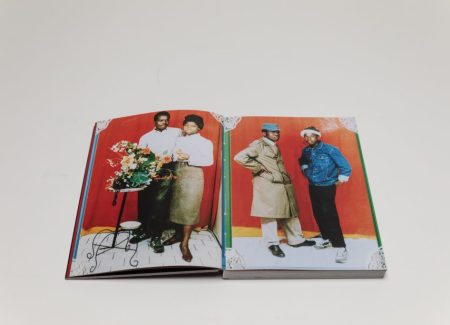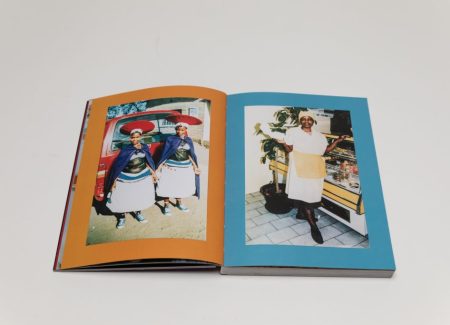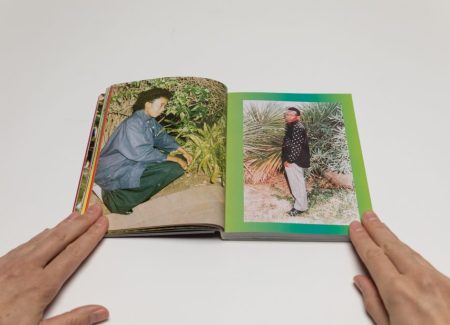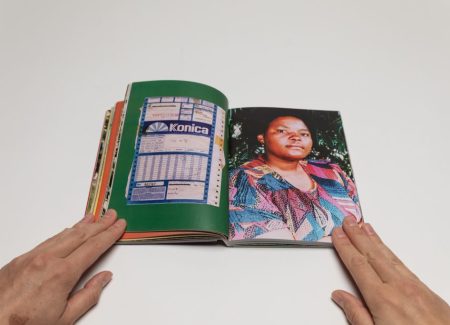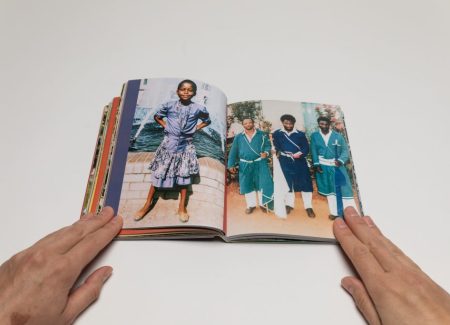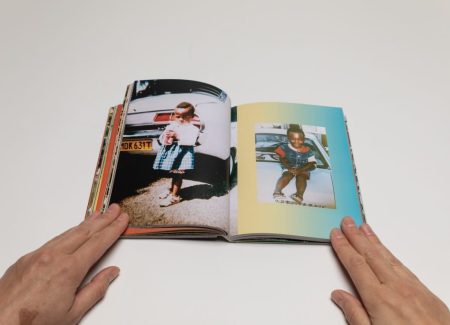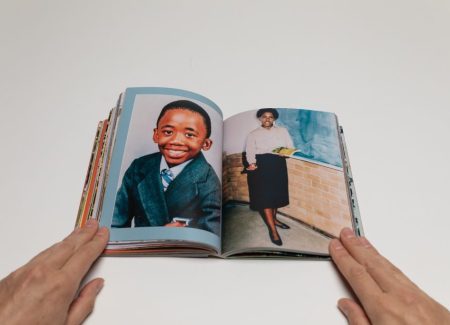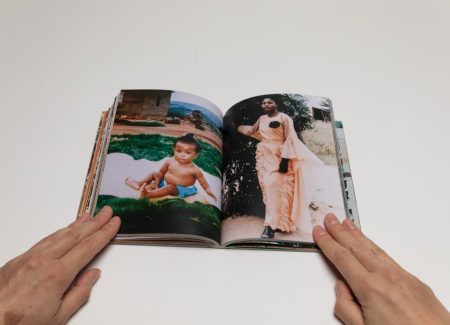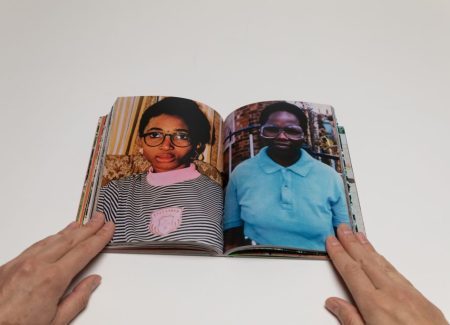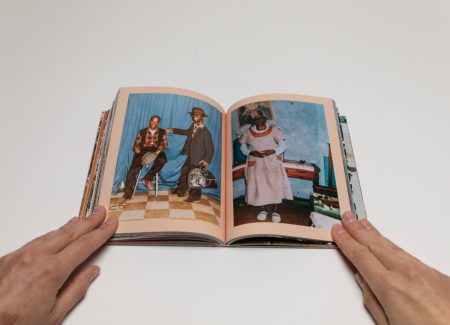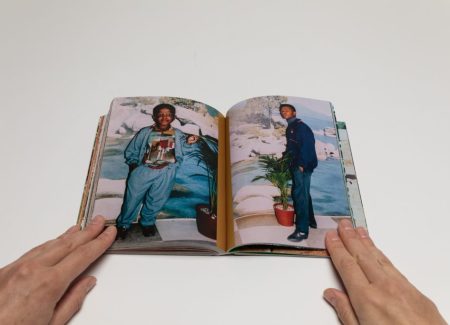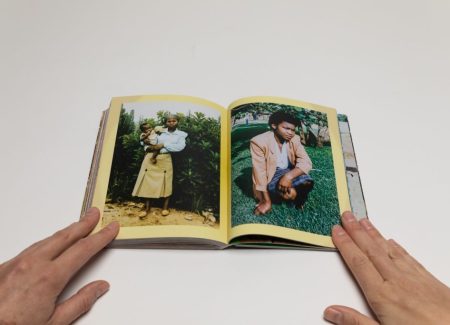JTF (just the facts): Published in 2021 by Fraglich Publishing (here). Hardcover (6×7.75 inches), 195 pages, with 157 color photographs. Includes an essay in English and Zulu. In an edition of 150 copies. (Cover and spread shots below.)
Comments/Context: Fraglich Publishing, a small publishing house initiated by the Austrian photographer Lukas Birk, focuses on projects at the intersection of photographic archives and storytelling. Birk has spent the past decade researching photography in China, South and Southeast Asia, and the Indian subcontinent.
In one of his many projects, he established the Myanmar Photo Archive. Working closely with a team of local collaborators, Birk helped create a large-scale archival platform of photographic materials from Myanmar, ranging from studio portraiture and private photo albums to company records and scientific research photography, going back as far as the 1890s. Yangon Fashion 1979 – Fashion=Resistance, published in 2020 (reviewed here), gathers up a selection of 1970s era studio photographs from Myanmar, showing the role fashion played in sparking imagination and a personal form of rebellion. Fraglich’s books are usually produced directly in the region featured in the book, using local materials and offering a fair price to the local communities.
Fraglich’s most recent photobook is titled Not Collected and was edited by Birk together with Audrey Salmon, a French artist and a PhD candidate at the University of the Witwatersrand in Johannesburg, South Africa. The book offers an insight into local communities around Johannesburg, just before apartheid (the government-implemented system of racial segregation) ended. The book is based on an archive of photographs Salmon came across in a framing and poster shop owned by Ravi Lalla and located around the corner from her own house in Jeppestown, a suburb of Johannesburg.
Lalla opened his business back in 1978 and for decades he developed and framed photographs brought in by the people who worked in Jeppestown; usually these people would commute to the area from other places. With the end of apartheid, the movement of people changed too, and many of his customers didn’t return to collect their photographs and had left no phone numbers to contact them. For over three decades and until recently, Lalla kept the archives in the box. Not Collected brings together this forgotten part of history, sharing in book form the photographs that were “not collected” by their owners.
Not Collected is a relatively small book, intimate and easy to hold. The photograph on the cover appears in a dark blue frame and depicts a young woman in sunglasses wearing a colorful jacket matching orange flowers just behind her. The frame is a thoughtful design element, a nod to Lalla’s frame shop. The color photographs inside are printed full bleed, occasionally with a colorful border around them. There are no captions, no names, no dates, and no locations along the photographs, rather they form a continuous visual flow offering a collective picture of that time.
The photographs included in the publication were taken between 1985 and 1999, and they document many joyful and proud moments in people’s life, regardless of the political backdrop of the apartheid years. They show people on vacations, getting married, posing with their families, at work in their office, or simply modeling their best clothes. The visual narrative begins with a photo of a receipt, dating back to 1999, taped most likely to a folder or a box. The first spread shows a dressed up couple posing for a photo with a red backdrop behind them, standing next to a table with flowers that the woman gently touches. The photograph across the spread shows the same man, now in a trench coat and hat, posing with another man, again against the same red backdrop. Lacy white decorative photo corners appear on both images.
The act of being photographed often triggers a moment of joy and pride. A portrait of a woman posing under a blossoming tree is paired with a photo of a boy standing next to a woman (probably his grandmother who raised him) as they both look straight into the camera. A couple of pages later, a full spread image shows a group of people sitting around the table, all dressed up and smiling. The colorful frames around some photographs add another cheerful layer to the parade.
The editing and pairing of the images highlights certain similarities between them. A photo of a young woman squatting in front of bushes as she looks away is paired with an image of a man standing next to palm trees. Another excellent pairing shows two photographs of kids, one with a girl with a can of Coca-Cola seen standing next to a car, and the other a smiling girl sitting on top of a Chevrolet. This collection of photographs shows people in their joy, with confidence and dignity, capturing private moments that couldn’t be controlled by the state. This is the world that is theirs, and these photographs manifest the resilience of the people.
The very last photo in the book shows some of the boxes that held the photographs that weren’t collected by their owners and that now are shared with a wider audience in this photobook. The endpapers depict a street view map of Jeppestown indicating the location of the store; Lalla still works there. Three photographs inset at the bottom, each framed in a different color, show him as a little boy, a young man and more recently. Perhaps with the aid of the supporting information, some of the people in the pictures can recognize their own photographs, or Lalla, and revisit his store, closing the circle that is now still open.
This project recalls the archival efforts of Beijing Silvermine, led by the French photography collector and curator Thomas Sauvin; it houses an extensive archive of vernacular photographs from China, many drawn from a collection of discarded negatives from a recycling plant. One of its photobook projects, Until Death Do Us Part (reviewed here), is an excellent example of using a playful book format to enhance the experience of engaging with vernacular photography. Fraglich Publishing similarly stands out for its innovative approaches to book formats, and particularly for its commitment to tell stories engaging local communities at various levels. Not Collected brings to light an unseen perspective on township life during apartheid, showing that no matter how dire the political situation, the undimmed spirit of everyday people cannot be tamed.
Collector’s POV: Lukas Birk and Audrey Salmon do not appear to have consistent gallery representation at this time. As a result, interested collectors should likely follow up directly with the artists via their websites (linked in the sidebar).
